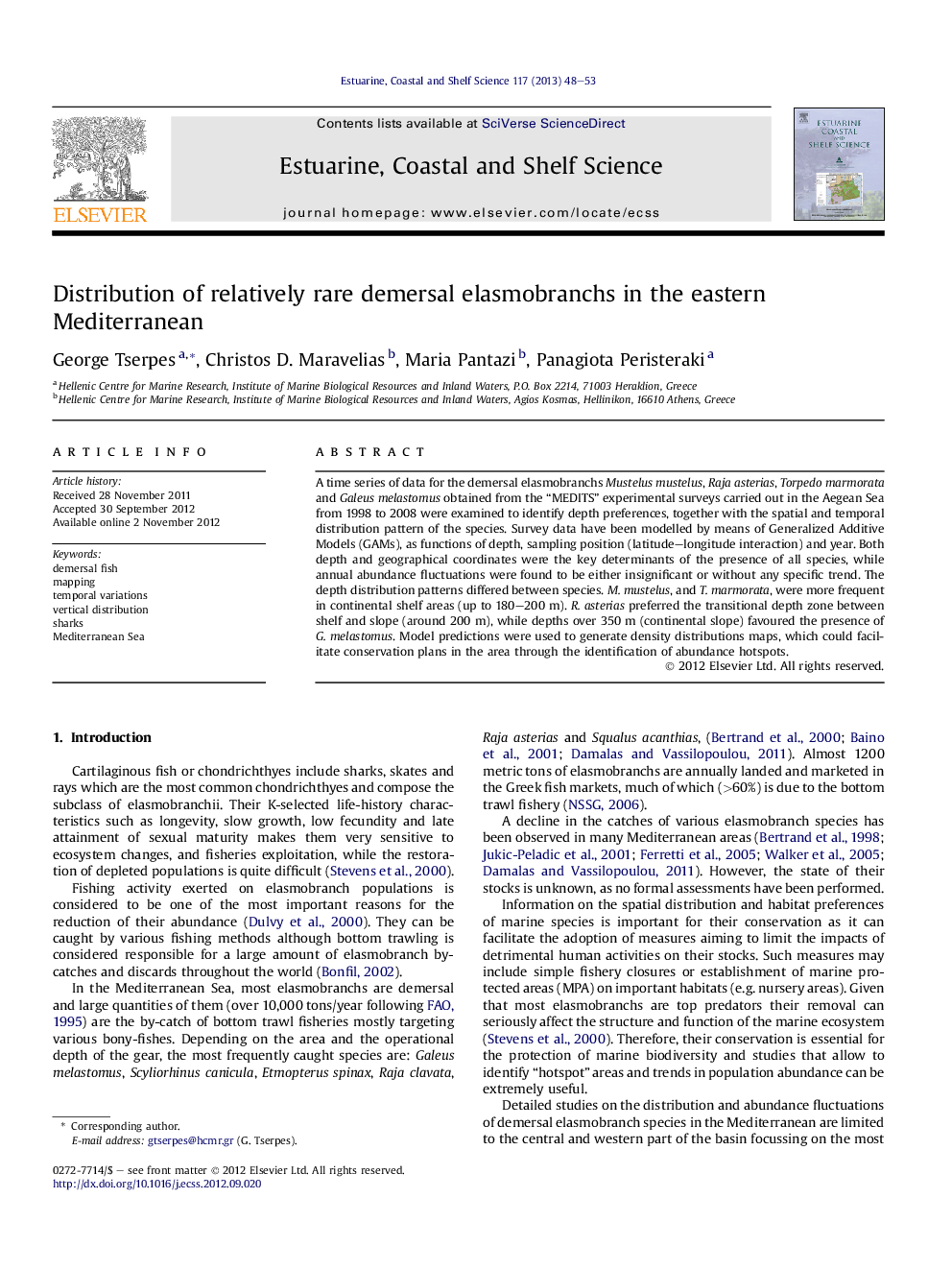| Article ID | Journal | Published Year | Pages | File Type |
|---|---|---|---|---|
| 4540082 | Estuarine, Coastal and Shelf Science | 2013 | 6 Pages |
A time series of data for the demersal elasmobranchs Mustelus mustelus, Raja asterias, Torpedo marmorata and Galeus melastomus obtained from the “MEDITS” experimental surveys carried out in the Aegean Sea from 1998 to 2008 were examined to identify depth preferences, together with the spatial and temporal distribution pattern of the species. Survey data have been modelled by means of Generalized Additive Models (GAMs), as functions of depth, sampling position (latitude–longitude interaction) and year. Both depth and geographical coordinates were the key determinants of the presence of all species, while annual abundance fluctuations were found to be either insignificant or without any specific trend. The depth distribution patterns differed between species. M. mustelus, and T. marmorata, were more frequent in continental shelf areas (up to 180–200 m). R. asterias preferred the transitional depth zone between shelf and slope (around 200 m), while depths over 350 m (continental slope) favoured the presence of G. melastomus. Model predictions were used to generate density distributions maps, which could facilitate conservation plans in the area through the identification of abundance hotspots.
